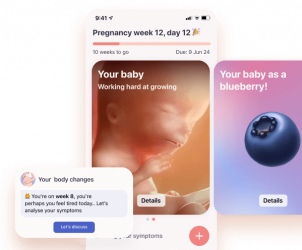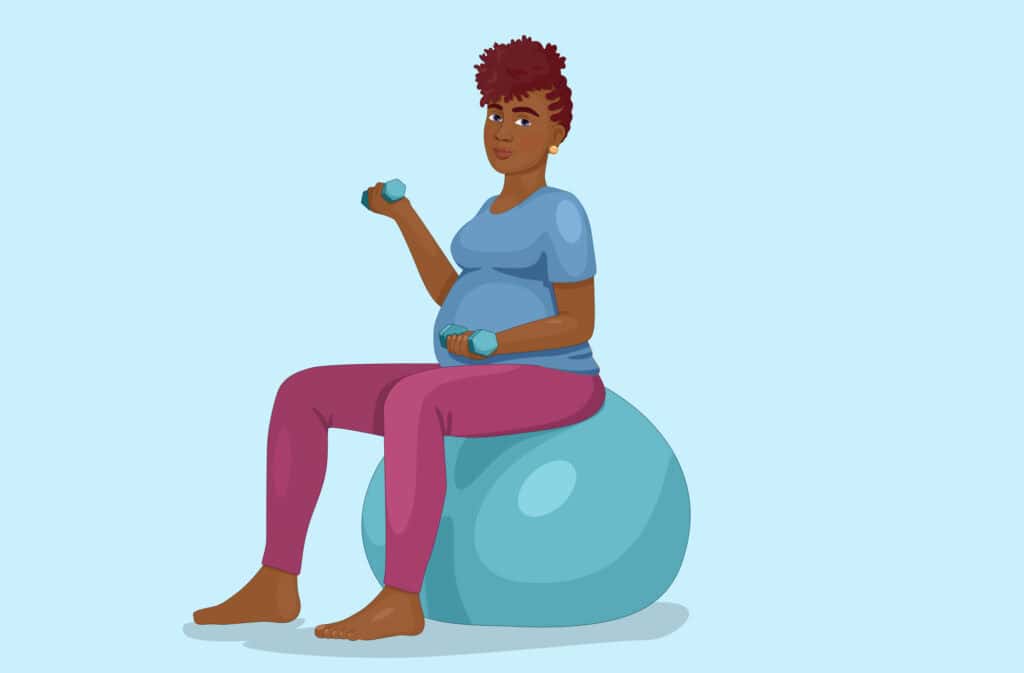Femia > Implantation calculator
Implantation calculator
We will help you to estimate the likely date of embryo implantation after ovulation or fertilization


- Updated Feb 25, 2025
- Published
CRAFTED BY HUMAN
Crafted by human At Femia, we provide accurate and up-to-date information at every stage of your journey, from trying to conceive, pregnancy and postnatal support. All content is created by a real person based on in-depth research and own professional experience. Femia ensures that you will receive expert advice, strict accuracy and a personalized approach from our authors/medical experts. Learn more about our editorial policy.
FACT CHECKED
Fact checked At Femia Health, we maintain the highest standards of editorial excellence in delivering content focused on helping you conceive, guiding you through pregnancy, and supporting you postpartum. Explore our content review principles to learn how we ensure the accuracy and quality of our health and lifestyle tips for every stage of your journey.
What is an implantation calculator?
An implantation calculator helps estimate when implantation may have taken place after conception. Your implantation date calculator uses your ovulation date or the date of your last period (particularly for irregular periods) to work out the approximate date when a fertilized egg may have implanted into your uterus. This date can help you understand whether your symptoms resembling pregnancy warrant a pregnancy test.
How do you use an implantation calculator?
Knowing your date of ovulation, period, and luteal phase length is key to using an implantation calculator. If you regularly track your menstrual cycles, finding these dates is easy.
1. Inputting your ovulation date: Every month you have a six-day fertile window during which you have the highest likelihood of conceiving. The last day of this fertile window is your ovulation day, as your egg survives for about 12-24 hours after release. You have the highest chance of conceiving within these 24 hours. Your fertile window lasts longer, however, because sperm can survive up to 5 days from the last time you had sex.
OR
2. Inputting your last period date and average cycle length: An alternative to using the implantation calculator is using the start date of your last menstrual cycle and the average length of your period. Since it is not always possible to know the exact date of ovulation, especially if you haven’t been tracking your cycles regularly, you can use these details to estimate a date for implantation.
Using either of these variables, an implantation date calculator can help estimate a time when implantation, usually 6-10 days after ovulation, may have occurred.

How is your implantation date calculated?
Using your date of ovulation
Within the up-to-24-hour window from when your egg is released, it starts moving toward your uterus via your fallopian tube. In this journey, it can be fertilized by sperm traveling up your reproductive tract. Implantation takes place six to ten days after ovulation.
So if you have regularly tracked your menstrual cycle, and feel you may have conceived in this cycle, using the implantation calculator can estimate the implantation’s occurrence between six and ten days after ovulation – in your luteal phase.
So for a 28-day cycle, ovulation usually takes place around day 14, and six to ten days after that is day 20-24 of your menstrual cycle.
If you don’t have your date of ovulation
If stress changes the timing of your period or if you have irregular periods, pinpointing the exact date of ovulation for the implantation calculator can be challenging. Nonetheless, if you have been tracking your cycles regularly, you can use Femia’s ovulation tracker to find out the approximate date of ovulation.
An estimate for your ovulation date can be found by subtracting 14 from the average length of your menstrual cycle. Your cycle length may range from 21-35 days. If your previous cycle was, say, 32 days, then subtracting 14 from 32 is when ovulation would have taken place – that is day 18 of your menstrual cycle.
We use 14 as a standard number, assuming that your luteal phase, the phase following ovulation, lasts about 14 days. The luteal phase can range from 12-15 days. If you have longer cycles, it is your follicular phase (the first phase of the menstrual cycle) that can vary more in length.
Accuracy and limitation
While most menstrual calendars estimate cycles lasting anywhere from 28-30 days, these vary from one woman to the next. Additionally, not every one of your menstrual cycles is the same length. Your fertility window and ovulation date are estimates based on how regular your cycles are and how often you track them.
Using an implantation calculator for irregular periods may skew the results you get. This is because the implantation date is calculated from your latest period and ovulation date. But if these change regularly over the last few cycles, the results might not be accurate, as implantation calculators provide better estimates for regular cycles with regular fertile windows.
👉Find out more: How do I know if I am fertile enough to get pregnant? Key signs and tips
Understanding implantation calculator results
Your implantation calculator results are primarily required to know when to take your first pregnancy test. Knowing your ovulation date also helps you to use a due date calculator based on implantation. As we discussed above, it takes 6-10 days for your egg to implant into your uterus. The implantation calculator results can help you and your doctor estimate your due date. By the time you get a positive pregnancy test result, you are probably a week or two into your pregnancy.
In the initial stages of pregnancy, implantation calculator results can help you to understand how far along you are and what’s required during this phase.
What happens with the pregnancy hormone hCG during implantation?
Once your egg implants into the uterine wall, it stimulates the formation of the placenta. Within ten days of fertilization, the first symptoms of pregnancy may appear. Right from the first week of pregnancy, your placenta starts releasing the pregnancy hormone human chorionic gonadotropin (hCG) hormone, an early indicator of pregnancy.
Your initial hCG levels may be too low to be detected by a urine pregnancy kit. However, hCG doubles every 48-72 hours in the first few weeks of pregnancy. This is how, by taking into account implantation calculator results you can time your pregnancy test to help you improve the test’s identification of a pregnancy.
This rate of increase can vary from one woman to the next. However, most early hCG hormone rises can be detected within the first few weeks, especially through the evident symptoms of pregnancy such as morning sickness, fatigue, and breast tenderness.
Femia offers the most accurate tool for tracking your health indicators during pregnancy
How soon can you test for pregnancy after implantation?
Home pregnancy testing kits detect the pregnancy hormone hCG in your urine. Hormone levels as low as 20 to 50 mIU/ml can be picked up by these testing kits. However, if your hCG levels are lower than this, or you have taken the test too early, it may appear negative. A pregnancy test taken on the first day of missing your period is 90% sensitive to detecting pregnancy. This increases to 97% by the end of the week.
So using an implantation date calculator can help you assess the best time to take your pregnancy test – usually a week or so after implantation. This advanced implantation calculator is better than estimating either your period date or implantation date, to give you a more accurate timeframe of when to take a pregnancy test, increasing your chances of getting a positive result when you’re pregnant.
| Days past ovulation (DPO) | Likelihood of implantation |
|---|---|
| 0 DPO | Ovulation |
| 1 DPO | Travel inside a Fallopian tube |
| 2 DPO | Travel inside a Fallopian tube |
| 3 DPO | Travel inside a Fallopian tube |
| 4 DPO | Travel inside a Fallopian tube |
| 5 DPO | Travel inside a Fallopian tube |
| 6 DPO | Implantation possible |
| 7 DPO | Implantation possible |
| 8 DPO | Implantation possible |
| 9 DPO | Implantation very possible |
| 10 DPO | Implantation possible |
| 11 DPO | Implantation possible |
| 12 DPO | Implantation possible |
| 13 DPO | Implantation unlikely |
| 14 DPO | Implantation unlikely |
| 15 DPO | If missed period, take a pregnancy test |
| 16 DPO | If missed period, take a pregnancy test |
How can I know if the implantation was successful?
There is no definite way to confirm whether implantation was successful, except for a positive pregnancy test. However, a few women report noticing early signs of pregnancy – useful clues to possible conception even before taking the test.
- Around 16-25% of pregnancies observe bleeding in early pregnancy, of which implantation bleeding can be a cause. The implantation bleeding calculator is also a good calculator for women who observe this pinkish spotting around the time of implantation.
- Along with bleeding, implantation cramping may also be noticed in your lower abdomen. Cramps can sometimes radiate to your lower back and down your thighs.
- Approximately 98% of women relay fatigue as a common pregnancy symptom. With your body working overtime to provide the essentials for your pregnancy, you may notice pregnancy fatigue even before a positive pregnancy test.
- Release of hCG and continued elevation of progesterone favor the formation of lactation glands within your breasts, resulting in early pregnancy breast tenderness.
While these symptoms provide useful hints for possible pregnancy, especially if you have missed your period, you will still have to take a pregnancy test to confirm. If your home pregnancy test comes back negative, but you have persistent symptoms, talk to your doctor.
👉Find out more: Can you get pregnant without a period?
Benefits of using an implantation calculator
- Using an implantation day calculator helps limit the guesswork when it comes to when to take your pregnancy test. The estimated implantation date will give you more confidence that you’re taking your pregnancy test at the right time and that you’ll get fewer false negative results.
- Your implantation calculator helps you track your pregnancy even if you have irregular periods. When you notice the early signs of pregnancy after a possible conception, it’s a good idea to take a pregnancy test. In such a scenario, an implantation calculator can help you assess whether you are doing so too early or at the right time for a positive result.
- With an implantation calculator, you have a clearer timeline of your pregnancy. Knowing when fertilization may have taken place followed by implantation can also help in estimating your due date.
- For couples who have attempted in vitro fertilization, an implantation date calculator also proves useful in estimating when’s the right time to take a pregnancy test. In this case, the date of the embryo transfer is used to estimate the date of implantation.
Questions from the Femia community
I have PCOS, can an implantation calculator work for me?
Yes, it might work for you, but you will need to check the results with your doctor. Since the hallmark of PCOS is an absence of regular ovulation, your periods may not always be followed by ovulation. So sometimes early pregnancy signs may either be symptoms of PCOS or PMS, making predictions from an implantation calculator inaccurate. Confirm results with your healthcare provider if you get back positive pregnancy results.
Does the length of my luteal phase affect the accuracy of an implantation calculator?
Knowing the length of your luteal phase is important for the accuracy of an implantation calculator. With regular menstrual cycle tracking, you can estimate the average length of your luteal phase. It is usually about 14 days for most women. However, if it is much longer or much shorter, it can limit the accuracy of your implantation calculator.
Can an implantation calculator predict my chances of pregnancy?
An implantation calculator helps to predict when implantation may have taken place. This helps you know when to take a pregnancy test, to confirm if conception occurred in your previous cycle. An implantation calculator is a tool used to improve the accuracy of a pregnancy test by helping you determine when to take a pregnancy test.
The bottom line
Your implantation calculator helps estimate when implantation may have taken place after possible conception. You may have been experiencing the signs of early pregnancy, along with some pinkish discharge just before your period, and may not be sure whether it’s the right time to take a pregnancy test. Here, your implantation day calculator can tell you whether your egg has reached your uterus and started producing the hCG that would be detectable by a pregnancy test.
Implantation calculators and menstrual trackers, while often accurate, are just pregnancy timeline estimates. If you receive a positive pregnancy result, you should check in with your healthcare provider for a confirmatory test and personalized prenatal care.
References
- Ferreira-Poblete, A. “The Probability of Conception on Different Days of the Cycle With Respect to Ovulation: An Overview.” Advances in Contraception, vol. 13, no. 2/3, Jan. 1997, pp. 83–95. https://doi.org/10.1023/a:1006527232605.
- Su, Ren-Wei, and Asgerally T. Fazleabas. “Implantation and Establishment of Pregnancy in Human and Nonhuman Primates.” Advances in Anatomy, Embryology and Cell Biology, Jan. 2015, pp. 189–213. https://doi.org/10.1007/978-3-319-15856-3_10.
- Bull, Jonathan R., et al. “Real-world Menstrual Cycle Characteristics of More Than 600,000 Menstrual Cycles.” Npj Digital Medicine, vol. 2, no. 1, Aug. 2019, https://doi.org/10.1038/s41746-019-0152-7.
- Anderson, Jackie, and Kenn R. Ghaffarian. “Early Pregnancy Diagnosis.” StatPearls – NCBI Bookshelf, 2 Jan. 2023, www.ncbi.nlm.nih.gov/books/NBK556135.
- Betz, Danielle, and Kathleen Fane. “Human Chorionic Gonadotropin.” StatPearls – NCBI Bookshelf, 14 Aug. 2023, www.ncbi.nlm.nih.gov/books/NBK532950.
- Wilcox, Allen J. “Natural Limits of Pregnancy Testing in Relation to the Expected Menstrual Period.” JAMA, vol. 286, no. 14, Oct. 2001, p. 1759. https://doi.org/10.1001/jama.286.14.1759.
- Bhatti, Dimple, et al. “Pregnancy Outcomes in Women With Vaginal Bleeding in Early Pregnancy.” CHRISMED Journal of Health and Research, vol. 9, no. 3, Jan. 2022, p. 188. https://doi.org/10.4103/cjhr.cjhr_99_21.
- Nissen, Michael, et al. “Prevalence and Course of Pregnancy Symptoms Using Self-reported Pregnancy App Symptom Tracker Data.” Npj Digital Medicine, vol. 6, no. 1, Oct. 2023, https://doi.org/10.1038/s41746-023-00935-3.




